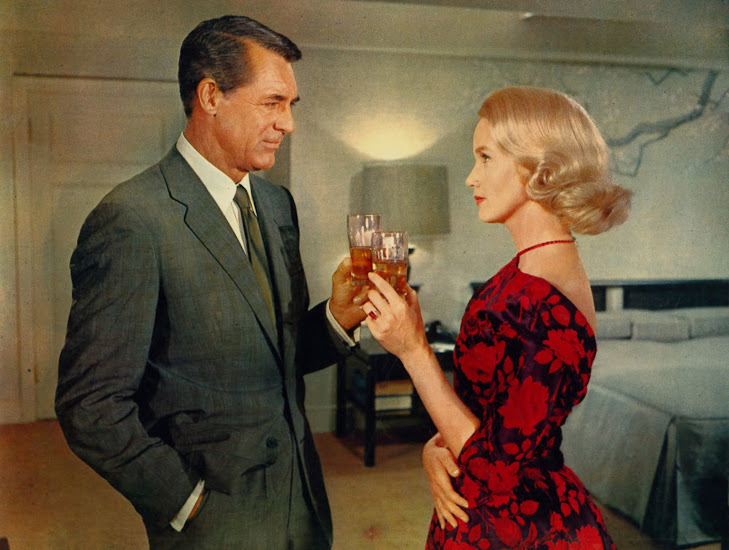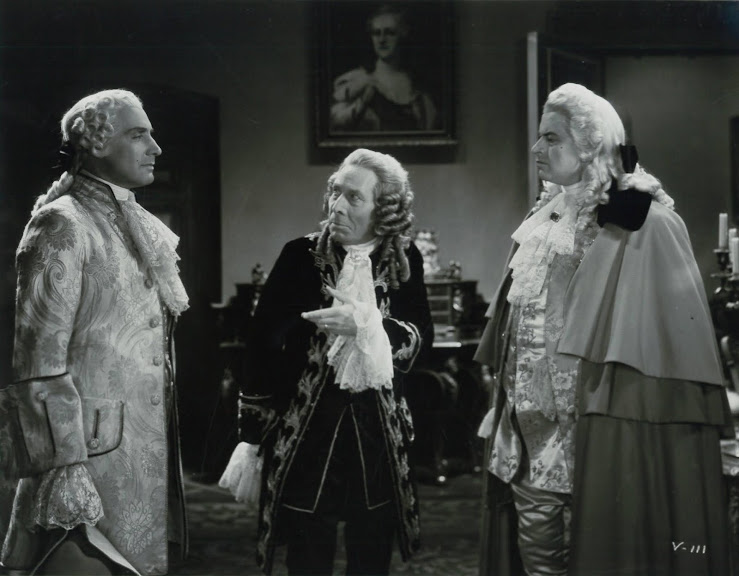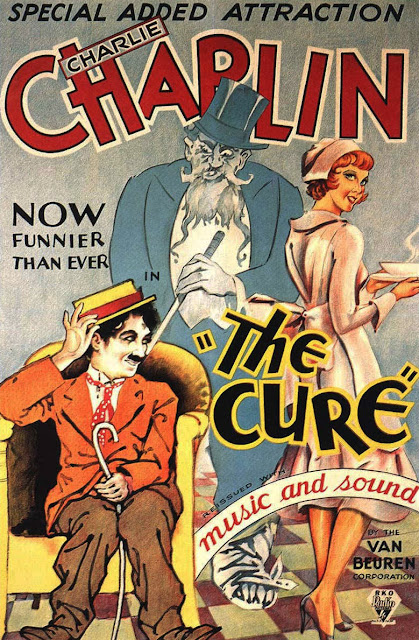What Shook Them Plenty In The Twenties
When The Monster (1922 and 1925) Terrified and Tickled Us
Lon Chaney in The Monster would seem to have all of necessary ingredients, adaptation from a Broadway play that ran 101 performances, Roland West direction, a dark house with trap passages, human vivisection planned if not carried out … the title alone proposes full and final statement on all things horrific. Think how many chillers before or after might thrive on such definitive labeling to sum up content a hundred score others shared. Were one to make a film about a monster, would it not be ideally called The Monster? Yet we barely know this Monster, regarding little, if any of it, as outstanding, not even Chaney, his entry delayed till thirty minutes in. I've gone years underestimating The Monster, was put right by perusing a collection of Broadway theatre reviews (1918-1923) by Dorothy Parker, most unseen since long-ago publication, then rescue from yellowed newsprint by editor Kevin C. Fitzpatrick. Parker we know as seasoned wit of verse, short stories, general observations with sting in the tail. She roasted many a hapless play, but The Monster wasn’t one of them. The hard-boiled reviewer found it terrifying, sarcasm off. Is it time we acknowledge scary tales told from darkened stages as most effective transmit of tension, a mode to spook us more than mere movies could? For all of shock I’ve seen on celluloid, there’s not been one all-out horror performed live to my eyes. Parker’s shivery review of The Monster from 1922 makes me realize I missed quite a something for not being around when scares issued more from stages than screens.
At first it seemed she was being clever at The Monster’s expense, but no, Parker was genuinely spooked. Mirroring mood of the fun-inflected chiller, there is warning to faint hearts tempered by Dorothy Parker wit that would characterize all she’d do through a long career. The best of previous thrill plays were “as the pattering of raindrops on a tin roof compared to even the calmest stretches of The Monster,” Parker citing The Bat and The Cat and the Canary as “little lullabies” beside this “truly grand show! … The gentleman seated next to me will bear to his grave the marks I left upon him when I clutched him in a frenzy of terror during the close of the second act. Heaven only knows how he laughed off those feminine fingerprints when he got home to his wife.” Parker mentions “electric lights” out front of the Thirty-Ninth Street Theatre announcing “Merry Melodrama” that was The Monster, though she barely found it merry, “you get to that state where you are piteously grateful for any little thing which brings it home to you that it is only a play, after all.” I wondered for reading all this if Dorothy Parker, other critics, audience members, were naturally timid in 1922, not like crocodile-skinned moderns who could stand anything. But explanation is not so simple as that.
Note Parker's 1922 audience was essentially captive in a theatre darkened to extreme on both the stage and among seats, especially during a third act she saw as a summit of terror, what with the heroine strapped to a table and about to be dismembered by a mad surgeon, her would-be rescuer bound in an electric chair and taking repeated shocks from villainy. Consider too a black venue where ingress-egress is made difficult if not unmanageable thanks to loss of visibility save mayhem played out before you. There were also sounds heard from the dark, live sounds, not canned to safe distance by a motion-picture track (and this was before sound movies), onlookers “gnawing the arms off their seats,” as Parker put it. Nothing can duplicate the impact of an actual voice, especially one expressing fear or panic. Consider history of live performers said to electrify crowds, but not able to do so when captured on film. I drove down to watch my niece in a Playmakers rendition of Wait Until Dark, which like The Monster, staged much of action in ink blackness. What jolted us was sudden shrieks and cries from characters we could not see, feeling they might be upon us for being so close. It’s knowing these people are actually there, not at safe remove of projected images. Here is what would give live spook shows their punch, also “haunted houses” at fairs and Harvest fests. The “for real” as opposed to “It’s Only A Movie.”
The Monster impacts less on film. Had Dorothy Parker gone, she may well have panned it. Yet critics did speak well of The Monster, several saying it topped the play. We care, if at all, because Lon Chaney is the mad “Doctor” Ziska who has taken over a lunatic asylum and cast all of staff into on-site dungeons. Comic relief, much supplied by Johnny Arthur, weighs heavy upon expectation that Chaney will be the pivot point. Fact he isn’t causes resentment toward The Monster, plus our conviction that any chiller directed by Roland West should be way better than this. I saw The Monster a first-time years ago and did fast-forward to Chaney stuff, annoyed to distraction by Johnny Arthur. Reading the Dorothy Parker review pointed up values in the source material I had not considered, The Monster an early source for much that would shape scaring for years to come. So why does undercut of those scares alienate us now? A fan magazine review of The Monster (at right) hints at attitudes of the day, and why laughs were a needed leveler, saying that “mystery executed to the tune of comedy” is “the only way to treat this subject so as not to make it appear ridiculous.” So horror undiluted is, at least was, ridiculous? Was there risk of the audience laughing at proposed thrills not already tempered by laughter? Such policy may explain a lot of what we would see in chillers to come, Doctor X an example many of us have lately enjoyed. Who supplies the comic relief makes a difference, my vote securely with a Lee Tracy, or Glenda Farrell (in Mystery of the Wax Museum), as opposed to less appealing Johnny Arthur in The Monster.
Merry Melodrama was indeed what they wanted, what, in fact, they insisted upon. Remember how 1925’s Phantom of the Opera went back to drawing boards for being unrelievedly horrifying? Comedy was the solution in part, Snitz Edwards a supplier of it. We get him willing or not, a Phantom unexpurgated mere stuff of dreams, Snitz a forever-anchor to show how habit and expectation differed in 1925, a same year The Monster came out. Criticism goes hardest today on comics who were brought in to wet fuses, Johnny Arthur an affront to the Chaney we are there to see, getting way more screen time, even coming to a rescue which will upturn all of henchmen plus Chaney as head threat. The Monster seems an encore of Sherlock, Jr., which it does resemble, even if Johnny Arthur makes a tepid substitute for Buster Keaton. Arthur would continue in comedy, fussy types once sound came, his grip of posterity derived from being ineffectual father to Our Gangers Darla and/or Spanky for mid-to-late 30’s Hal Roach. There was a column in the old Classic Film Collector penned by a “Don Marlowe,” who claimed he was a member of Our Gang. Marlowe wrote, around 1969 as I recall, that Johnny Arthur ended up washing dishes at a hash house of undisclosed locale. For me, this was early insight into how the mighty could fall. Not sure as to accuracy however, as Marlowe was known to tell whoppers. Whatever truth or not of his kitchen policing, Arthur did, by most accounts, finish up destitute in 1951, fated to an unmarked grave at age 68.
 |
| Swat That Snitz For Befouling Our Precious Phantom! |
The Monster's house alone is reward for watching. Much like what was designed for the stage no doubt, but here are multiple levels gotten at by retreat or pursuit, advantage had by film over live staging. Night business was shot after sundown on insistence of Roland West, him devising a wire-walk, done in dark and during an electric storm, putting plentiful thrill in thrill comedy. Best way to enjoy The Monster is through eyes of those there in 1925, or 1922 if lucky enough to attend the play. Chaney gets very much into the spirit of fun, less burdened by make-up, thus more his own face than those thousand others, which he uses not to mock his menace, but to revel in exaggeration of it. Complaint I won’t argue with is not enough Chaney, absent for that first half-hour, gone again till the forty-five-minute mark, getting stride for a third act’s wow and final dispatch. His mad lab anticipates what varied Doctor Neff’s of traveling magic-and-excitation put up, then took down, from matinee stages. Chaney with scalpel hovering over a bound victim, her captive swain voltage-seated and fit with a metal bowl cap, evokes not only live spook rallies to come, but Bride of the Monster, which I’d like to think was inspired by The Monster, save fact that Ed Wood was but one-year-old when the latter came out in 1925. Chaney look and gestures are like Hjalmar Poelzig arrived early. Surely The Monster was at least partial model for Boris Karloff’s performance in The Black Cat. Things Chaney does with his hands are a delight across all his work, used here to humorously flamboyant effect. Wonder what he could have done with the Pretorius part in Bride of Frankenstein. I’ll not go further ‘long those lines, lest we recreate virtually all of 30’s horror in Lon’s image.
































































